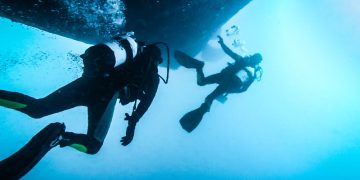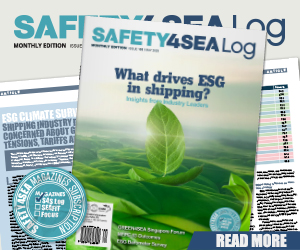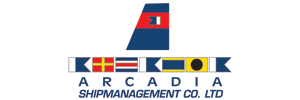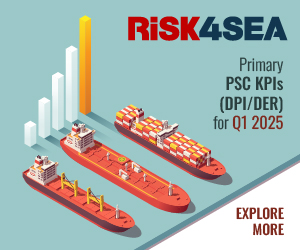Panellists at an Inmarsat Maritime ‘Thriving in the Digital Age’ seminar highlighted the power of connectivity to promote a happy and healthy environment for seafarers while advising a strategic approach to its deployment.
The evolution of maritime connectivity is a positive development for an industry striving to incentivise a new generation of cadets. While overuse can lead to stress and fatigue among crew members, onboard internet is a tool for good when deployed strategically.
This was the consensus among a panel of seafarers and other industry experts at a recent Inmarsat Maritime ‘Thriving in the Digital Age’ seminar. Held to coincide with Singapore Maritime Week 2025, the session explored the intersection of connectivity and crew welfare aboard the ‘floating home’.
Peter Schellenberger, Director and Founder of supply chain and maritime consulting network Novamaxis, described high-speed connectivity as a “given” that shipping companies today “have to learn how to deal with” if they hope to attract and retain the best seafaring talent.
Social media in particular is a “very powerful tool” that the industry should look to leverage to inspire and motivate young cadets, suggested Carl King, Communication Consultant at Seafarer Social.
“We always talk about these brand-new technologies introducing these fantastic new AI integrations, and I’m all for it,” he said.
If you open a seafarer’s phone and look at the most-used applications, it’s the same five that everybody else is using: Facebook, Instagram, TikTok, and so on. We as an industry should be capitalising on these platforms to communicate with our next generation of seafarers.
..Carl King said.
Leading the way in the emerging field of maritime social media are chief engineer Mark Phillip Laurilla and electrotechnical officer (ETO) Mary Jane Siy Chuan.
Mark Phillip Laurilla – also known by his online alias ‘Chief MAKOi’ – hosts a YouTube channel documenting life at sea. Launched in 2017, the channel now has over 400,000 subscribers, each video attracting around a million views. However, when it first began gaining traction, his company “panicked” and wanted him to shut it down. “Fast forward a few years – especially during the pandemic – they suddenly realised that they needed social media for visibility,” he said.
The advancement in vessel connectivity that has enabled seafarers to become social media stars is not lost on Chief Makoi, for whom “instant video calling” represents a significant upgrade on the “snail mail” and “monthly phone calls” he relied on early in his career.
Mary Jane Siy Chuan, who embarked on her first voyage in 2022, is a recent entrant into the world of shipboard vlogging but already has tens of thousands of followers on Facebook. It was her colleagues, pointing out that a female ETO was a rarity in the industry, who encouraged her to share videos of her work aboard ship – an idea she embraced “to inform and motivate other females, or even males, to become an ETO”.
Even in her relatively young career, Mary Jane has noticed significant progress in the availability of onboard Internet. However, she also acknowledges considerable room for improvement.
From conversations with fellow seafarers in the cargo sector, she reported that the majority still encounter issues with coverage – “specifically in the middle of the sea”. Most, she added, receive limited data allowances – around 100–200 megabytes per day or even as low as one or two gigabytes per month – as employers seek to tackle “fatigue” and “mental health issues” attributed to the overuse of social media. “We need to improve the collaboration between crew members and shore office because a lot of us don’t feel like we’re being heard,” she said.
According to Carl King, the challenges faced by Mary Jane Siy Chuan and her colleagues demonstrate a need for shipping companies to place more faith in vessel captains. “Why don’t we put the trust back in the captains?” he asked. “Why is it, as a shore-based organisation, we should have the power to switch on connectivity like a tap? Isn’t it the captains’ job to make that judgement?”
With responsibility for providing – and restricting – Internet access, captains may be better placed to promote a happy and harmonious environment on board their ships.
Drawing on personal experience at sea, Chief Makoi reported:
If we have a long voyage, and we have a weekend, we try to organise an impromptu party or a special dinner, and we require the crew to attend and shut off the Wi-Fi. By removing Internet access for “one or two hours”, captains encourage crew to interact rather than being “locked up in their own cabin
…. he explained.
Limiting internet access is one way of fostering crew interaction; another is using that connectivity to bring seafarers together in the same space. Peter Schellenberger pointed to the provision of “live-streaming TV in the mess room” as a means of minimising onboard isolation.
In a further example of where connectivity is being used to promote crew welfare, Peter Schellenberger explained how the technology is enabling a “pre-emptive, holistic approach” to medical care in which “the vessel can call doctors as many times as they want”.
He added that Novamaxis is trialling an AI-based solution that presents seafarers with an anonymous questionnaire on their well-being when they connect to Wi-Fi through personal devices. This, he explained, allows companies to “build up a database of the physical and mental state of the vessel” and identify where any intervention is required.
Ultimately, the panellists agreed that while onboard connectivity is critical to inspiring, incentivising, and informing a new generation of seafarers, companies must carefully consider how they deploy and provide it to ensure the floating home is also a happy home for its residents.































































